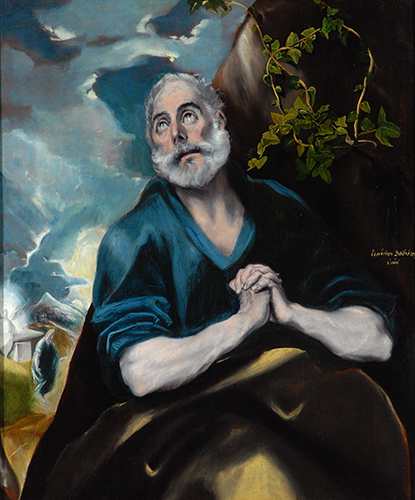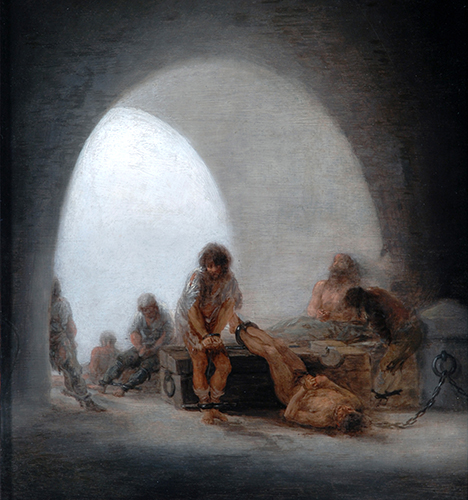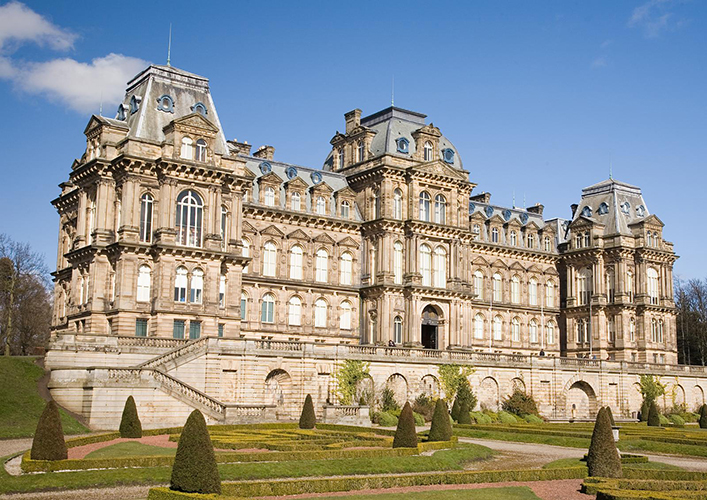This fall, the Meadows Museum, SMU, will present 11 paintings produced by some of Spain’s most celebrated artists, drawn from the collection of England’s The Bowes Museum. Curated by Amanda Dotseth, El Greco, Goya, and a Taste for Spain: Highlights from The Bowes Museum will mark the first time that works from that museum will travel to the US.
The
son of a British aristocrat, prominent Northeast England landowner, John Bowes
(1811–1885) pursued an interest in politics, business, and the arts during his
lifetime, becoming a part of English and French high society. Joséphine Coffin-Chevallier
(1825–1874) was a French actress, painter, and the daughter of a clockmaker.
After their marriage in 1852, John and Joséphine’s shared passion for the arts
prompted them to create a public museum in the market town of Barnard Castle,
near John’s estate. Using John’s wealth and influence, along with Joséphine’s
intuitive eye, the couple began acquiring art in 1860, with a strong focus on underappreciated
Spanish works of the time.
Between
the years 1862 and1874, John and Joséphine would amass a collection of
approximately 15,000 paintings and objects—from silver to tapestries. This also
included 102 Spanish paintings, creating within The Bowes Museum one of the
most comprehensive collections of Spanish art in the British Isles.
Unfortunately, neither John nor Josephine would live to see the completion of
their museum, which opened to the public in 1892.
John
and Joséphine’s interest in Spanish painting came on the recommendation of one
of their art dealers, who identified an important opportunity following the
death of Conde Francisco Javier de Quinto y Cortés in 1860. A Spanish
politician, de Quinto was also the director of the Museo de la Trinidad in
Madrid and an established collector.
After
the Conde de Quinto’s death, his collection was auctioned in Paris in 1863; the
11 works presented in this exhibition are all works the Boweses acquired from
that collection.
The
exhibition will also include selected archival materials that demonstrate John
and Josephine’s process of collecting, such as the catalogue from the de Quinto
sale with John Bowes’s annotations.
previous

previous

El Greco (Domenikos Theotokopoulos), (Greek, 1541–1614), The Tears of Saint Peter, 1580s. Oil on canvas. The Bowes Museum, Barnard Castle, County Durham, UK; B.M.642.

Francisco José de Goya y Lucientes (Spanish, 1746–1828), Interior of a Prison, 1793–94. Oil on tinplate. The Bowes Museum, Barnard Castle, County Durham, UK, B.M. 29.
Francisco de Goya’s (1746–1828) Interior of Prison (1793–94), track the evolution of Spanish art at the end of the 18th century—from depictions of the monarchy or Catholic saints, to a minimalistic focus on literary figures and social injustices.

Juan deValdés Leal (Spanish, 1622–1690), Saint Eustochium, 1656–57. Oil on canvas. The Bowes Museum, Barnard Castle, County Durham, UK; B.M.10
Francisco José de Goya y Lucientes (Spanish, 1746–1828), Portrait of Juan Antonio Meléndez Valdés, 1797. Oil on canvas. The Bowes Museum, Barnard Castle, County Durham, UK, B.M. 26.
It
is this range in thematic resonance and style—from the vivid and spiritual
depictions of El Greco, to the restrained and naturalistic work of Goya—that
identify these 11 Spanish works as some of the most important of the Boweses’
collection.


“This
exhibition is, in a sense, telling two histories: one about artistic production
in Spain in the 16th through 18th centuries, and the other about its modern
legacy,” said Amanda W. Dotseth, Curator at the Meadows Museum. “In the 19th
century, the Conde de Quinto built an important private collection of historic
Spanish paintings. John and Joséphine later recognized the collection’s
edifying potential by purchasing key works to include in their public museum.
In so doing, they ensured Spanish art would have a prominent role among the
museum’s diverse collections. The Boweses were ahead of their time for
collecting Spanish art a century before the Meadows Museum opened its doors to
the public in 1965.”

